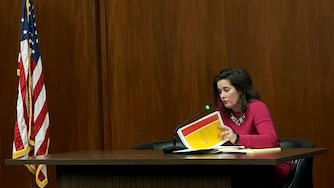A resident born more than 90 years ago in a rural hospital in Easton has pledged $25 million for a new medical center for the University of Maryland Medical System to serve not just the small town, but a wider swath of the Eastern Shore.
The $540 million UM Shore Regional Medical Center broke ground last year, counting on borrowed money, a $100 million pledge from the state and some cash for construction. The latest donation will go toward a fundraising goal of $100 million that will round out the financial needs and help pay for recruiting and retaining staff, new technology and other community needs.
The health system did not name the donor, who has asked to remain anonymous. The gift is among the largest individual donations to the system.
“It reflects a deep commitment to the well-being of our communities and is transformative — advancing our campaign to build a state-of-the-art medical center that delivers compassionate, high-quality care for generations to come,” Dr. Mohan Suntha, president and CEO of the medical system, said in a statement.
The hospital is slated to open in 2028 and marks the latest move by the system to reshape how medical care is delivered in the state.
The University of Maryland Medical System now provides about a quarter of all hospital-based care in Maryland. The system across the state has shuttered or scaled back services in some aging community hospitals and replaced them with one anchor hospital. Those anchors are buttressed by outpatient medical centers for primary and some specialty services, as well as emergency and urgent care.
Read More
The consolidation strategy has rankled some local residents and politicians who bemoan the loss of a wider range of hospital services in a nearby and familiar setting, even if they welcome other upgrades.
More than a decade ago, the system consolidated medical facilities and created UM Shore Regional Health to reorder care in the mid-shore region.
System officials, with the blessing and often funding of state authorities, say offering a little of everything everywhere is not a sustainable or efficient means of delivering health care. The hub-and-spoke system means patients can get most every-day types of services close by even if they have to go a bit farther to have a baby or major surgery.
In the Shore Regional Health network, a scaled-back hospital has been maintained in Chestertown because of the long distance to the new facility in Easton.
Ken Kozel, president and CEO of UM Shore Regional Health, said the modern anchor center in Easton will help attract doctors and other medical staff to practice in a rural area, where shortages are most acute nationally. Additionally, the shore hospital will work with the affiliated University of Maryland School of Medicine and other professional schools including nursing, dentistry and pharmacy to provide incentives to health care providers.
Kozel said he believes the medical system’s model will also help the Eastern Shore weather expected changes to federal health care policy and cuts to Medicaid. Many rural hospitals rely more heavily on the government health program.
“We are doing our best to reinvest in the community, in an efficient system so people don’t lose access,” he said.



Comments
Welcome to The Banner's subscriber-only commenting community. Please review our community guidelines.